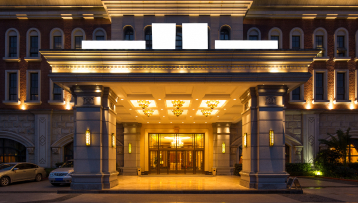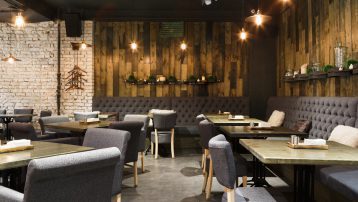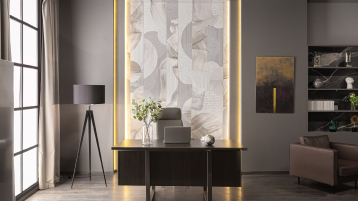In architecture, interior design, and real estate, FF&E is vital. It brings spaces to life. FF&E stands for Furniture, Fixtures, and Equipment. FF&E defines a space’s function and beauty. This applies to luxury hotels, corporate offices, and villas.
But how does FF&E contribute to a project’s success? What are the biggest procurement challenges? And what is the role of an FF&E designer in managing it all?
If you’re in real estate, design, or hospitality, this guide will help you manage FF&E.
What is FF&E, and why is it important in interior design?
FF&E (Furniture, Fixtures & Equipment) is movable items in a space. They provide comfort and aesthetics but are not part of the building’s structure.
What items are included in FF&E?
- Furniture: Sofas, chairs, beds, tables, wardrobes.
- Fixtures: Light fixtures, cabinets, blinds, and mirrors.
Equipment includes:
- Kitchen appliances
- IT hardware
- Projectors
- Security systems
In a five-star hotel, FF&E includes:
- Designer furniture
- Custom lighting
- Digital keycard systems
Why is FF&E important?
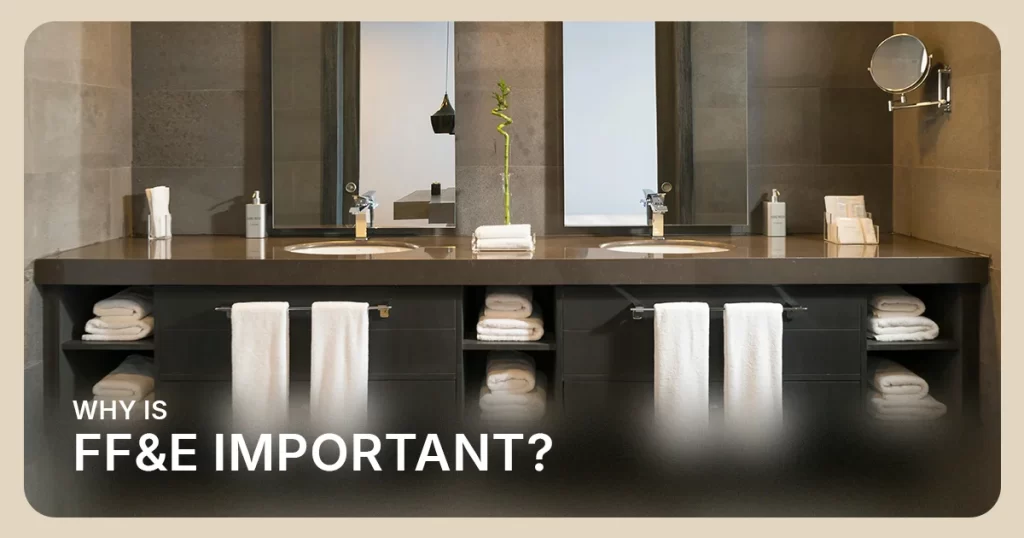
-
- Defines the functionality: It provides seating, storage, and usability.
- Enhances Aesthetics: It creates a stylish, welcoming space.
- Increases Property Value: Quality FF&E makes spaces more valuable and marketable.
- Supports Branding: Custom furniture and fixtures reflect a brand’s identity.
- Supports Sustainability: Using eco-friendly materials cuts the carbon footprint of a space.
How Does FF&E Contribute to a project’s Success?
Key Ways FF&E Ensures Project Success
- Aesthetic Appeal & Guest Experience: A well-furnished space is inviting, cozy, and functional.
- Efficiency: The right equipment keeps the business running smoothly.
- Durability & Compliance: FF&E must meet fire safety and durability standards and be sustainable.
- Budget & Cost Control: Smart FF&E buying prevents overspending.
- Brand Consistency: FF&E maintains a consistent design in restaurants, hotels, and offices.
What Does an FF&E Designer Do?
An FF&E (Furniture, Fixtures & Equipment) designer is responsible for selecting, sourcing, and arranging all furniture, fixtures, and equipment for a project, ensuring both aesthetics and functionality align with the overall design vision. Their role includes:
- Creative Vision & Concept Development – Ensuring FF&E selections complement the project’s theme, branding, and style.
- Procurement & Vendor Coordination – Sourcing high-quality, cost-effective products while managing vendor relationships.
- Compliance & Safety Checks – Verifying that all FF&E items meet fire, durability, and environmental standards.
- Budgeting & Cost Control – Preventing overspending by negotiating prices and maintaining financial oversight.
- Installation & Final Styling – Overseeing the delivery, placement, and final setup of all FF&E elements.
FF&E Procurement Challenges and Solutions
FF&E procurement is a critical yet complex aspect of real estate and interior design. Common challenges include supply chain delays, budget constraints, and unexpected logistical issues. To overcome these, designers must develop strategic sourcing plans, maintain strong supplier relationships, and implement contingency budgets to ensure smooth project execution.
Top FF&E Procurement Challenges and Solutions
Budget Overruns
- Challenge: High-quality furniture and imported fixtures can exceed budget limits.
- Solution: Plan early, negotiate bulk discounts, and explore local suppliers for cost-effective options.
Supply Chain and Shipping Delays
- Challenge: Global supply chain issues can cause delivery delays.
- Solution: Order in advance, work with reliable suppliers, and have backup vendors.
Compliance & Safety Regulations
- Challenge: Fire safety, environmental laws, and durability standards must be met.
- Solution: Ensure all items have certifications such as LEED, SASO (Saudi Standards), and Civil Defense approval.
Quality Control Issues
- Challenge: Some items arrive damaged or do not match specifications.
- Solution: Conduct on-site inspections and detailed vendor agreements to ensure replacements if needed.
How is FF&E managed during a project?
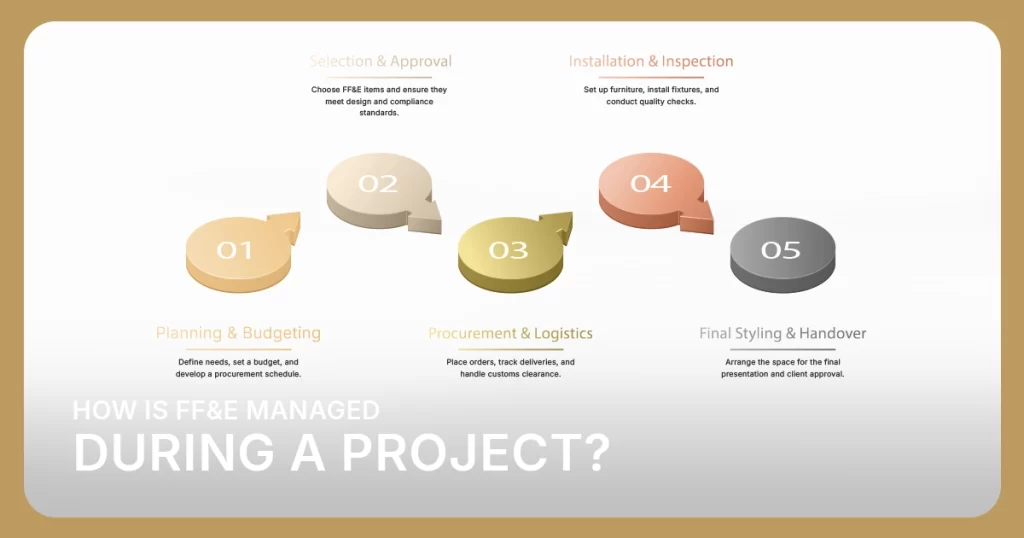
FF&E management ensures that all furniture, fixtures, and equipment is delivered, installed, and tested on time.
Step-by-Step FF&E Project Management
- Planning & Budgeting: Define needs, set a budget, and develop a procurement schedule.
- Selection & Approval: Choose FF&E items and ensure they meet design and compliance standards.
- Procurement & Logistics: Place orders, track deliveries, and handle customs clearance.
- Installation & Inspection: Set up furniture, install fixtures, and conduct quality checks.
- Final Styling & Handover: Arrange the space for the final presentation and client approval.
How does FF&E differ from OS&E?
While FF&E covers furniture, fixtures, and equipment, OS&E (Operating Supplies & Equipment) refers to daily-use items that support operations.
Key Differences Between FF&E and OS&E
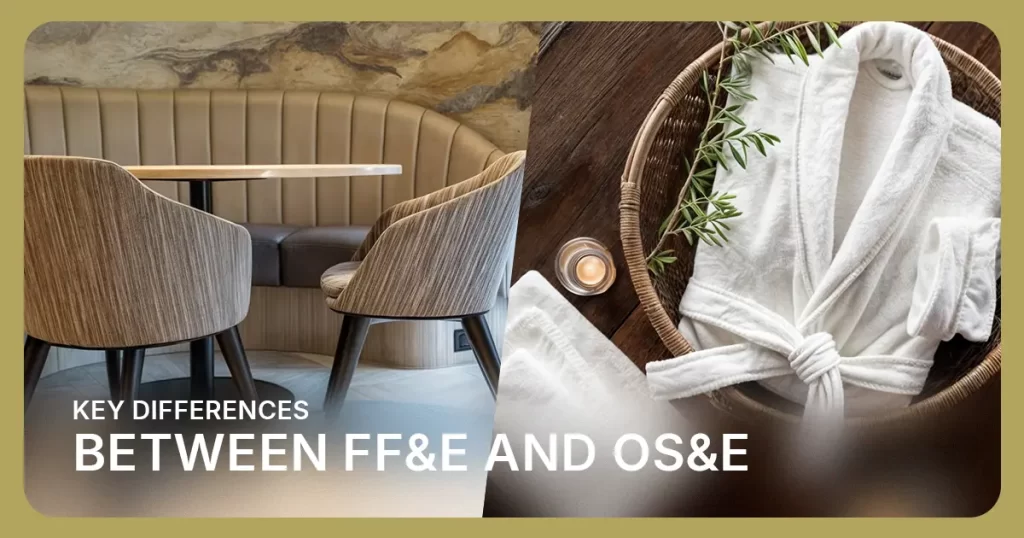
Understanding the distinction between FF&E (Furniture, Fixtures & Equipment) and OS&E (Operating Supplies & Equipment) is crucial in interior design and real estate projects.
| Category | FF&E | OS&E |
| Definition | Movable furniture, fixtures, and equipment essential for functionality and design. | Non-durable operating supplies used for daily operations. |
| Examples | Sofas, beds, tables, lighting, IT systems. | Bed linens, towels, cutlery, toiletries. |
| Lifespan | Long-term investment (5+ years). | Short-term use, replaced regularly. |
✅ Example: In a luxury hotel, FF&E includes designer furniture and digital locks, while OS&E consists of bathrobes, plates, and toiletries.
Conclusion
FF&E plays a vital role in shaping interior spaces across hospitality, real estate and corporate design. Proper planning, strategic sourcing and good design ensure that projects remain within budget while achieving aesthetic and functional goals.
Golden Hospitality Solutions (GHS) specializes in F&E consulting, ensuring high-quality and cost-effective solutions for luxury hotels, corporate offices and residential spaces. Their work on projects such as La Cordia Hotel Chain which showcases their expertise in delivering world-class FF&E solutions.
Understanding the role of FF&E in interior design and project management is key to success. By working with industry experts and implementing effective procurement strategies, companies can create functional, stylish, and sustainable spaces that stand out.
Faq
What is FF&E in interior design?
FF&E (Furniture, Fixtures & Equipment) includes movable items such as furniture, lighting, and appliances. It enhances a space’s functionality and aesthetics while supporting branding and sustainability.
How does FF&E contribute to a project’s success?
FF&E ensures comfort, efficiency, and visual appeal. It also improves property value, maintains brand consistency, and helps businesses meet safety and sustainability standards.
What challenges arise in FF&E procurement?
Common challenges include budget overruns, supply chain delays, compliance issues, and quality control concerns. Proper planning, reliable suppliers, and quality inspections help address these issues.

